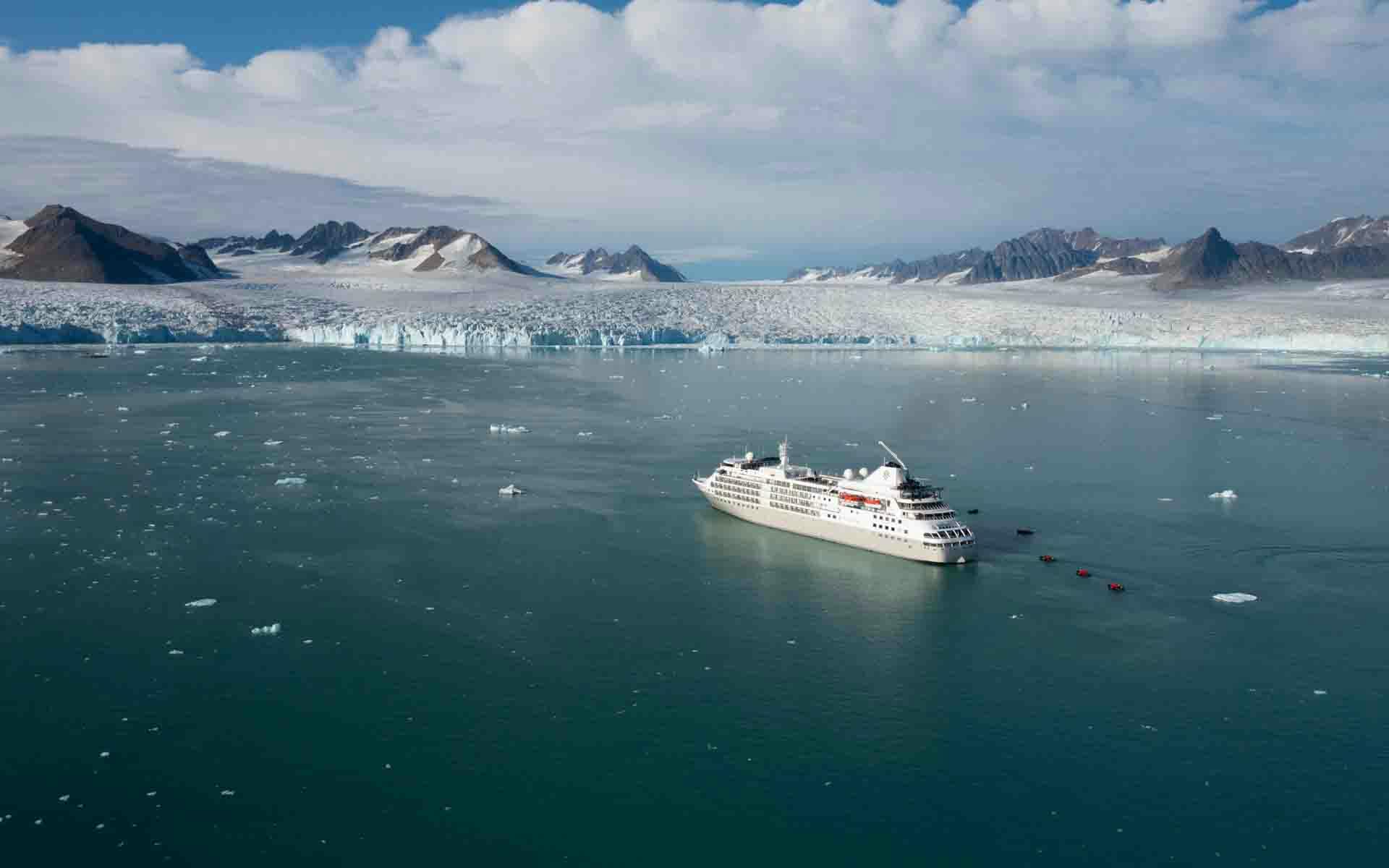Silversea’s Arctic Expedition Team Creates Transcendent Experiences
On an expedition trip around Greenland aboard Silver Wind, one the four ships in the Silversea fleet dedicated to expedition cruises, I met an international crew of talented guides from around the world who brought with them not only academic backgrounds but also people skills.
It was a pleasure to get acquainted with several of them. When they weren’t busy preparing for landings or commanding a Zodiac, I enjoyed hearing about the fascinating places they’ve been and diverse experiences they’ve had. These guides help shape our introduction to the far-flung destinations for Silversea’s expedition ships.
Ignacio (Iggy) Rojas, expedition leader
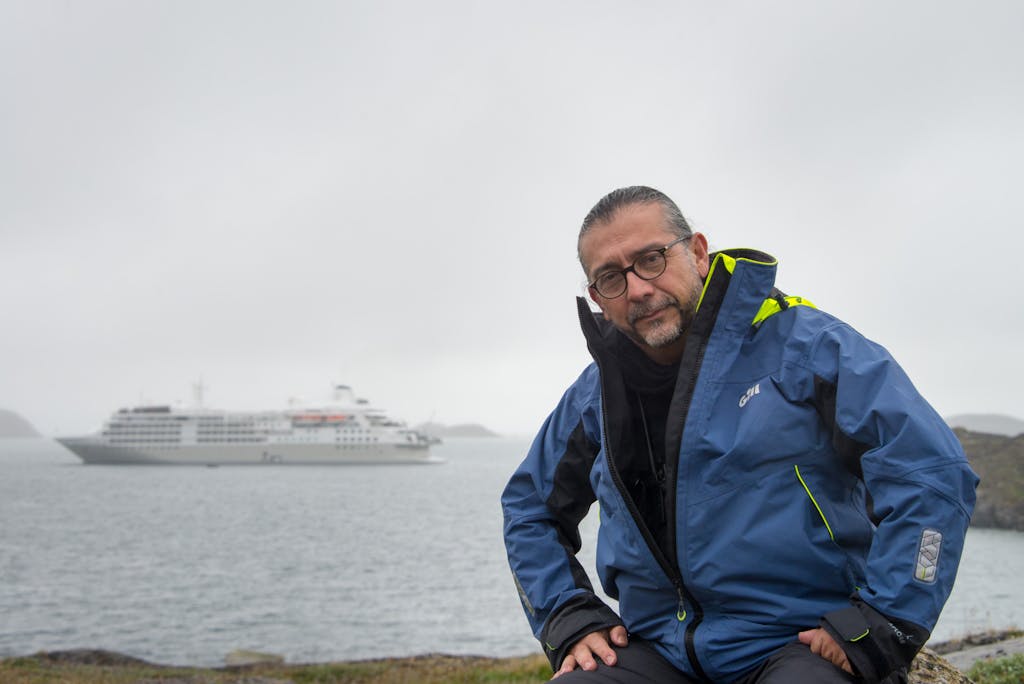
Bio: I started guiding in Manaus, Brazil, in the Amazon, as a way to make money while I was doing my master’s in ecology. The first ship I worked on was in 1992. By the end of that year, I was in the Ross Sea in Antarctica. I’ve done a lot of Antarctica, so being up here in the Arctic was my next natural step.
Given your years as a guide, what makes a good expedition team?
People with a predisposition for the outdoors and who like being with other people.
For most guests, Greenland is a blank. They know where it is on the map. They know it has a lot of ice. But ideally, the team enhances the appreciation of the wildlife, of the geology, of the people who are living there.
Most of the team has an academic background [with] a little more in-depth biology and geology.
Your expedition team is what makes the experience of the trip. A guest might have an interest in a certain location, and a guide can be the mediator between you and the destination, and makes it a little bit better. We are here to educate people about the Arctic regions, about the land, and that should be our main goal.
You are not hired because you are a boat driver. You can teach people to drive a Zodiac. You are hired because you are someone who has the academic knowledge.
What is the training protocol?
Silversea has a very good training program. Everything is done before the guides get onboard. There is an online platform for instruction for them, and then there is a mentor program when they arrive, to show them the ropes.
Some people come onboard and find life onboard is really different, something that doesn’t have many parallels with living shoreside. Particularly because, once you get onboard, it’s a 24/7 focus on the job.
One of the things I’ve realized on this cruise is how much goes into planning and far in advance. Next year’s Greenland schedule has already been determined. In such a remote environment, and with the extremes of unpredictable weather, how do you cope with last-minute changes?
Changes can happen at any time. The expedition in itself is something that relies on that flexibility, so it’s not the traditional classic cruise, where every port and time is predetermined.

In Greenland we have certain ports that are sort of defined, but in the Canadian Arctic, where we are looking for wildlife, we have more flexibility because the ship doesn’t need to be timed with port schedules. One day it might look better over here, or another place has wind.
Silver Wind has a capacity of 274 passengers and 239 crew. How big is the expedition team?
For this cruise it was 26, but it depends on the itinerary. In expedition cruising, 200 passengers have become a kind of standard. In Antarctica you have limitations — no more than 100 ashore. With an expedition team of our size, we can produce simultaneous activities. For example, I can make a landing with 100 and I have another 100 guests on Zodiac tours at the same time. That way we are using the landing site, but we can expand the number of the guests outside the ship.
There’s a niche market in cruising that offers hard-core expedition activities. Silversea offers a more rounded experience. On a ship like this there is the added benefit that there is luxury. Silversea gives a lot of weight to the onboard experience, so there are larger suites, there are more dining options and there is more service because they have more crew.
Ignacio Rojas
There are so many companies expanding into expedition that there is a severe lack of people who are experts right now. I think Silversea is doing quite a good job keeping its teams together.
A lot of companies have young, very enthusiastic people, but being young and enthusiastic doesn’t bring you the knowledge of the subject, for example, or the knowledge of what to do when things go wrong. Things change and we need to be adapting all the time.
You’ve led expeditions for a variety of companies. What characterizes what Silversea offers?
There’s a niche market in cruising that offers hard-core expedition activities. Silversea offers a more rounded experience. On a ship like this there is the added benefit that there is luxury. Silversea gives a lot of weight to the onboard experience, so there are larger suites, there are more dining options and there is more service because they have more crew.
Wai Yin Cheung (Wilson), glaciologist
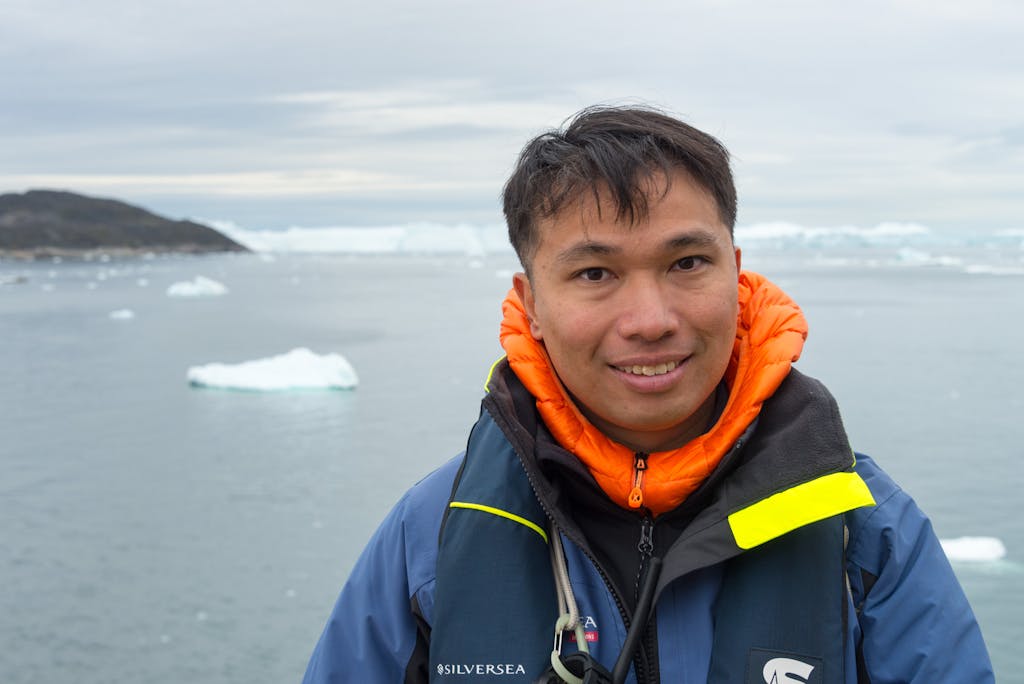
Bio: I live in East Greenland, but I’m a tropical boy, born and raised in Hong Kong. After I finished my university in Hong Kong, I worked in Switzerland as a mountain hut keeper, in Crans-Montana. One day there was an expedition cruise company representative who was hiking, and he said they needed Chinese-speaking expedition guides. I had a linguistic advantage, because I speak Chinese, English, a little bit of German, and a little bit of Russian as well, from when I studied at St. Petersburg State University.
Living in Switzerland got you interested in glaciers?
That was my first time crossing a glacier on my own. I was very curious, because a glacier is like a library of the Earth. When you read the landscape of the ice, it really tells you the history of the geography or geology in that area, the past and present and future of the landscape.
Switzerland is also where glaciological study was born, during the golden age of alpinism in the middle of the 19th century. At that time in England, the working class was starting to have capital, and they began to travel. When they went to the Alps, they saw glaciers for the first time, and the study of ice began.
Another thing that is interesting: We only discovered Antarctica 125 years ago. The modern age of glaciological study just filled in the last 15 or 20 years, largely due to satellite imagery. The knowledge today is not very old, for instance, but we still don’t know exactly how much ice is in Greenland and Antarctica.
What types of challenges do you find communicating the science of glaciology?
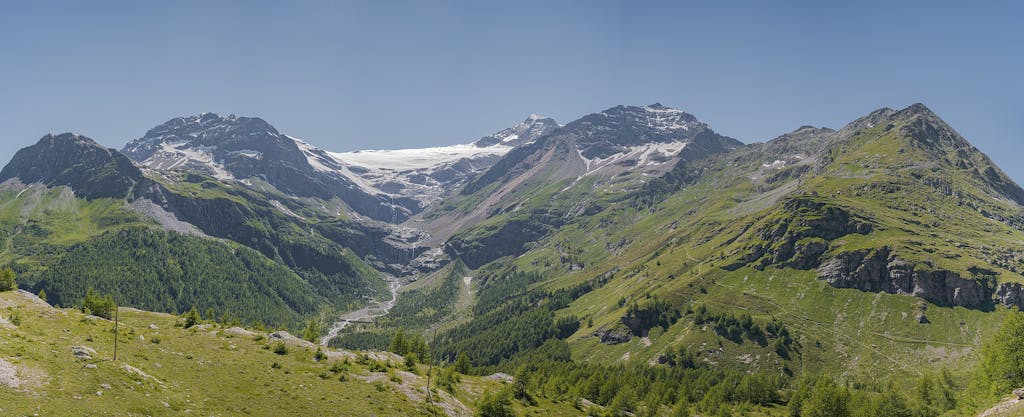
The challenge is that there are people from a lot of different backgrounds. But as scientists, we have a responsibility, a social responsibility, to tell everybody how the climate is changing, how the Earth is changing. Working on the cruise ship as a science communicator offers a good channel for me to deliver this message. The polar regions are the last frontier of wilderness, and we need to protect them.
Can Greenland benefit from climate change?
Yes and no. I have worked in the polar region for 10 years, and I see dramatic change in Greenland already. Tourism brings income for them to build a better infrastructure — for instance, the new airport in Nuuk. At the same time, as glaciers melt there’s a big concern for the water resources.
A second issue is, like the polar bears, the Inuit people use sea ice for travel in the winter. Maybe this will make their sea ice culture vanish a little bit or even disappear.
And one more thing: With the ice mass melt Greenland is rising an average of 1 centimeter a year. The sea level rise is really significant and will affect a lot of people who live on the coastlines of North America.
Phoebe Olsen, archaeologist

Bio: My father is Danish and my mum’s Irish, and I was brought up traveling. I was born in Denmark, and I lived in Hong Kong for a period, then at nine years old we moved to a small fishing village in Ireland. From there, I went to school and did my undergraduate in archaeology in Cork, Ireland.
How did you become interested in archaeology?
I remember reading books as a kid, like the “Clan of the Cave Bear,” by Jean M. Auel, and became interested in how humans were before, and why people moved around. After Cork, I did a master’s in Southampton, where I specialized in human and animal bones — osteoarchaeology.
After I finished my degree, I did various things, including working on an archaeological dig in Azerbaijan, and then with a commercial archaeological unit in England near Stonehenge, and I did that for five years. I was physically digging. If there was a site where there was a cemetery and likely to be human bones, I would go there.
Tell us about the opportunity with Silversea.
I grew up sailing, and I have my license for driving the power boats, and that was my way into expedition cruising. I’ve been really enjoying guiding, that I get to talk about the thing I love. I get to see the most amazing places and share this experience with people.
Beyond Azerbaijan and England, are there any other places you’ve been digging?
Unfortunately, not thus far. I don’t miss the digging as much because I’m still interacting with archaeology every day (with guests onboard). But I do have a mind to dovetail expedition cruising with periods when I can work on research projects. In commercial archaeology, you dig where they’re going to build. On research projects, you dig where you think you’re going to find something. So, hopefully, someday… the missing link!
To keep people engaged I do things like include personal anecdotes or funny stories. For my talk about the prehistory of the Arctic, I included slides from the movie “Ice Age.” When I talk about peopling of the Pacific Ocean, I use clips from the film “Moana.” The amount of research that went into that film was huge from an archaeological standpoint — a lot of it is very accurate and it helps guests engage and visualize that bit more.
Phoebe Olsen
On the ship, how do you balance the needs of those who are already interested in this subject versus engaging with guests who may not be as interested?
I find the more you know about a subject, sometimes the harder it is to give an overview. You get so excited about a topic that I have to remember that some guests want a more generalized overview.
To keep people engaged I do things like include personal anecdotes or funny stories. For my talk about the prehistory of the Arctic, I included slides from the movie “Ice Age.” When I talk about peopling of the Pacific Ocean, I use clips from the film “Moana.” (The amount of research that went into that film was huge from an archaeological standpoint — a lot of it is very accurate and it helps guests engage and visualize that bit more.) For the people who are more engaged with the topic and want to know more, that’s when sometimes I sneak in more detail.
Beyond archaeological interpretation, what other functions do you do on a cruise like this?
I’m a member of the expedition team and I drive the Zodiacs. When we go around seabird cliffs, I [may] buddy up with an ornithologist who gives information about the birds, and then I might give an interpretation of what the prehistoric landscape of the area might be.
I also go along with the tours, to add interpretation if I can and make sure everybody’s safe — we’re all qualified first aiders.
Calle Schöning, kayak guide

Bio: I started working with Silversea in 2018 in the Arctic. I’m originally from Sweden, and when I was 25 years old and got bored with life, I moved to Longyearbyen in the Svalbard Islands. I worked as a bartender, then in a grocery store. After a few years I realized I was stuck, and I felt like I should do something more. I took a one-year-long guide education course in Longyearbyen.
If you’re going to learn Arctic guide skills, there’s probably no better place than Svalbard, right?
That’s true. There was polar bear safety and avalanche safety and glacier safety and first aid. Things like kayaking are physical skills, but there were a lot of soft skills, like group dynamics, how to take care of people.
We also want to share some values with our guests, to not try and conquer nature but to make friends with nature. This was all part of the education I received, and I’ve taken further courses, because it’s fun to be competent and to learn more and develop.
When did you start guiding on expedition cruises?
An expedition cruise was part of the training I chose, as an intern on a ship in Antarctica, and by 2016 I was full-time on ships. I’ve also guided in Morocco, Scotland, Wales, Croatia. We crossed Greenland in April and May 2022, and I have my own kayak stored on the east coast of Greenland.
Because you work in both, do you have a preference for the Arctic or Antarctica?
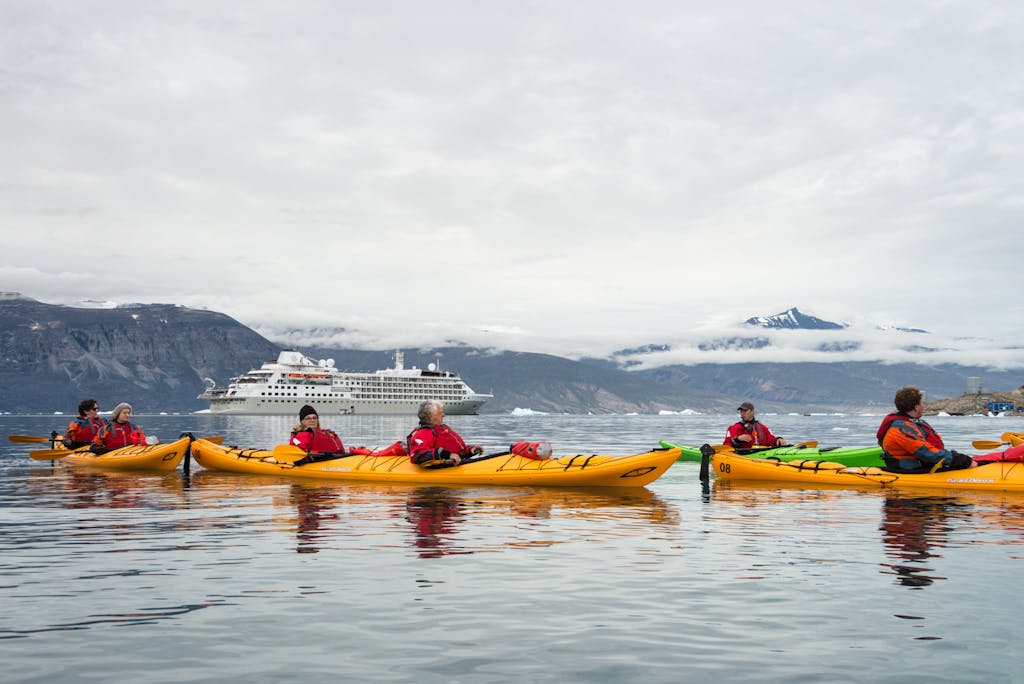
Antarctica is super cool, and I really hope to take my mom there. It’s so spectacular in so many ways. But there’s not really a permanent culture down there so I prefer the Arctic. A colleague said that Antarctica is like a very rich, sweet chocolate cake, and in one bite, you’ve almost had enough. The Arctic is like Japanese candy. It grows on you, then you can’t get enough.
For kayaking, what skill level should people have to feel comfortable? Can newbies go?
It’s a balance. We don’t want to get people out there who are not suitable for kayaking, but we have no desire to scare people off. And yet: we don’t want people to put themselves or others at risk.
In our FAQs we say that you should have some previous kayaking experience, but it’s more important that you are adventurous. You need to be in your comfort zone and comfortable in the water. And preferably, you have some previous kayak experience, but people definitely manage without having done it before.
Your guiding experience is mostly polar. Are there other places you are hoping to visit?
I’ve been to Hawaii once, but I’d love to see more of the Pacific Ocean. I love Alaska, and it’s so different from Greenland. There are many, many trees in the southern half of the state and many, many glaciers. I’m looking forward to seeing the Aleutians — that would be one more thing to take off the list.
